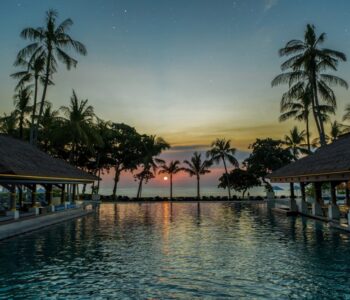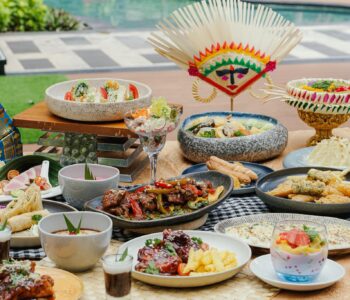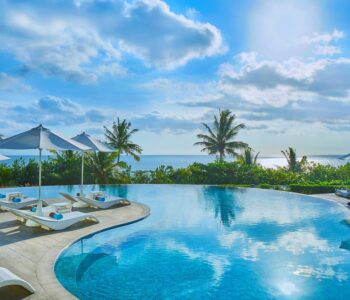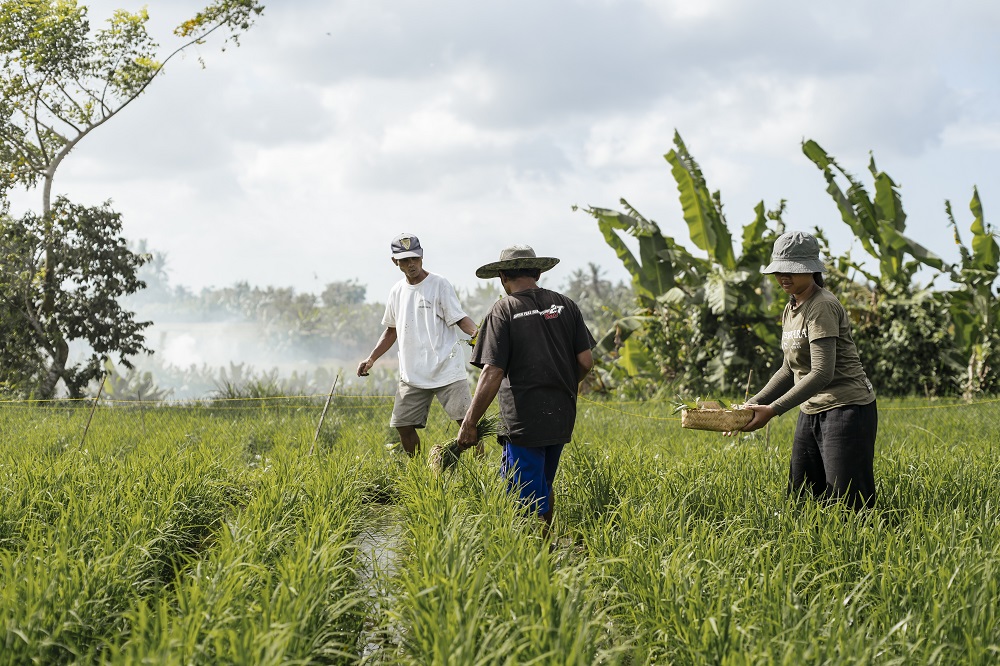
Best known for their 136-kilometre coast-to-coast walking trail through Bali farmland and forest, Astungkara Way is on a mission to cast aside chemicals – with the help of ducks, cover crops, and composting.
“When I was a kid, my uncle would take me out to the rice fields at night to see the fireflies,” recalls Astungkara’s Martana Diputra, who grew up amidst the pristine paddies of Peguyangan, north of Denpasar. “Not now. I haven’t seen any [fireflies] for years”.
Dwindling numbers of fireflies, dragonflies and swamp eels are just one of the signs that half a century of chemical farming has taken its toll on Bali’s environment.
But this wasn’t always the story. Agrochemicals came to Bali in the ’70s as part of Suharto’s ‘Green Revolution’ packages for rice farmers. Along with new GMO seeds, farmers were given ‘paket teknologi’ – chemical-packed goody bags of fertilisers and pesticides in a bid to maximise yield.
The government’s intention of self-sufficiency in rice production was noble enough. With Indonesia’s population skyrocketing, there was barely enough grain to fill bellies. But what has unfolded in its wake has been devastating.
Waterways have become polluted with chemical runoff. Excess nutrients have ended up in our surrounding oceans, growing algae and killing off coral. Bali’s heritage seeds have almost disappeared and farmers have become reliant on pricey pesticides to grow the hybrid varieties year-in, year-out. On top of this, older generations of field labourers are experiencing exposure-related tremors.
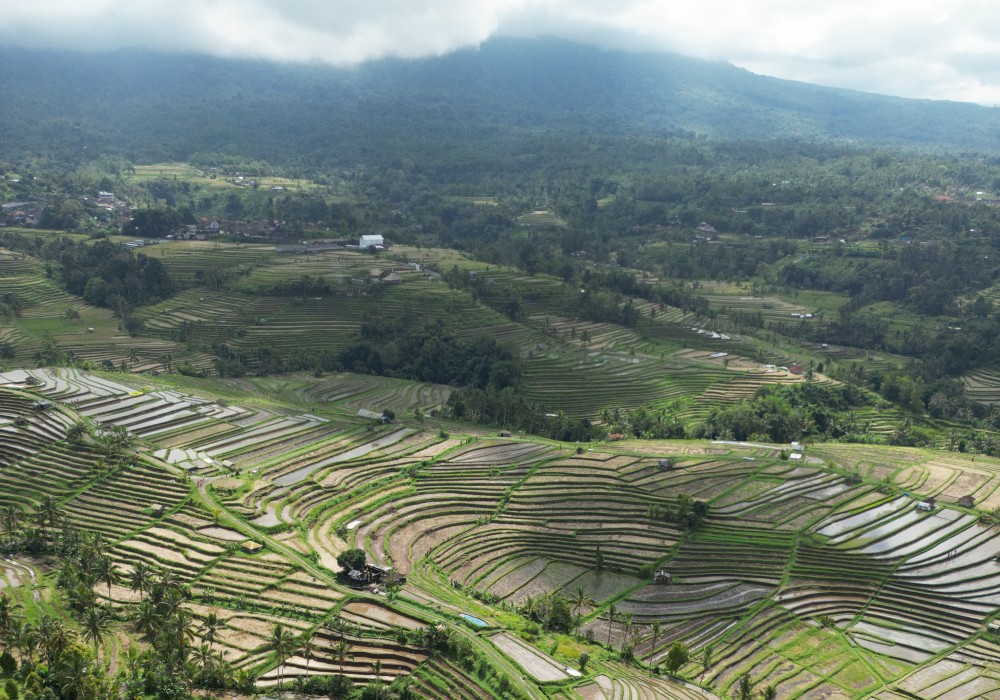
These are a few of the issues that long-time Bali resident and passionate educator Tim Fijal discovered when he first led a group of Green School parents to the paddies to learn about the rice cycle back in 2018. Ever curious, Tim got talking with the farmers – and was alarmed to hear the challenges they were facing.
“They understood that they were damaging life in the soil [through chemical use], and they were worried that if they continued, they’d one day be planting rice in the sand”.
As the Astungkara Way team got up and running during the pandemic, they learned that 99 percent of the world’s rice is cultivated with petrochemical fertilisers, herbicides and pesticides. At this point, it became clear that swapping these unsustainable agricultural practices with regenerative farming was about much more than being ‘green’.
Partnering with ecosystem restoration specialist, Tanguy Yu, and members of Subak Uma Lambing (Abiansemal’s rice farming co-op), Tim set out with a goal to transition 8000 hectares (10%) of Bali’s rice paddies to regenerative by 2030.
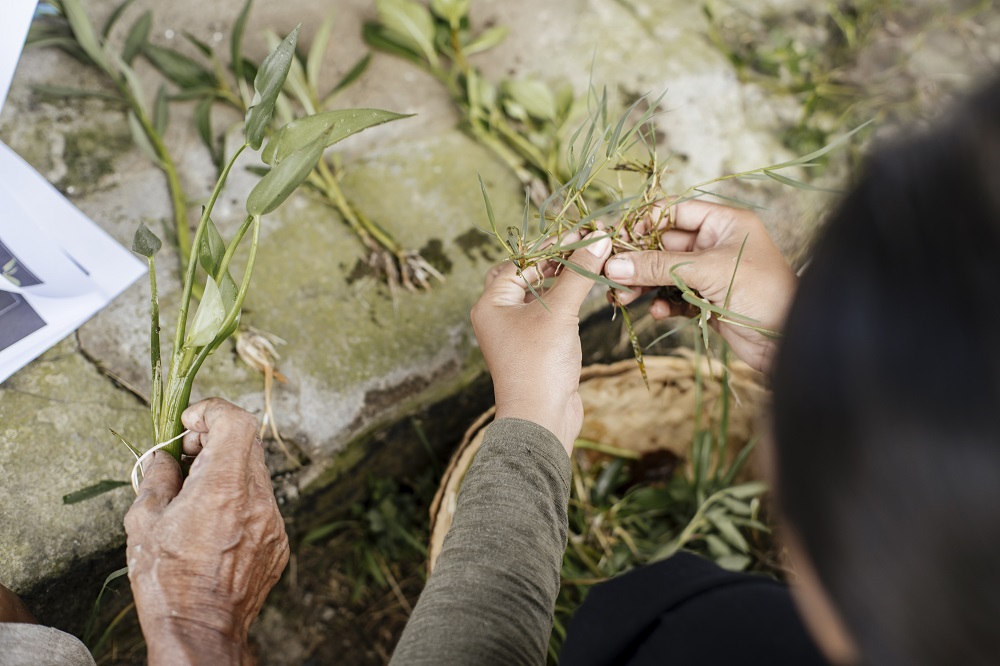
The breakthrough moment came last year, when Zero Foodprint Asia agreed to fund the setup of model farms to test the new techniques on small plots.
Astungkara Way’s tried-and-tested techniques are rooted in the principles of Complex Rice Agrosystems, the most broadly researched regenerative rice farming method. With direct input from the researchers themselves, this more holistic approach looks at the paddy as an entire ecosystem.
“Regenerative agriculture understands that all life comes from soil – and with a quarter of the world’s soils now degraded, there’s a lot of damage to be fixed,” says Tanguy. “Without healthy soil, you can’t grow healthy food, so our system is all about re-establishing life in the soil and helping natural biological systems thrive once again”.
Reintroducing heritage seeds is the first part. Hardier than hybrid varieties, they can also be collected post-harvest and replanted, saving on production costs. In lieu of glyphosate-based pesticides, it’s hungry ducks that provide pest and weed control – with the added benefit of eggs for added profit for the farmer. Peas and beans are planted in the borders, adding nitrogen to the soil and attracting bees and pest-eating insects. And importantly, instead of burning rice straw at the end of the cycle, it’s fed back into the field as compost.
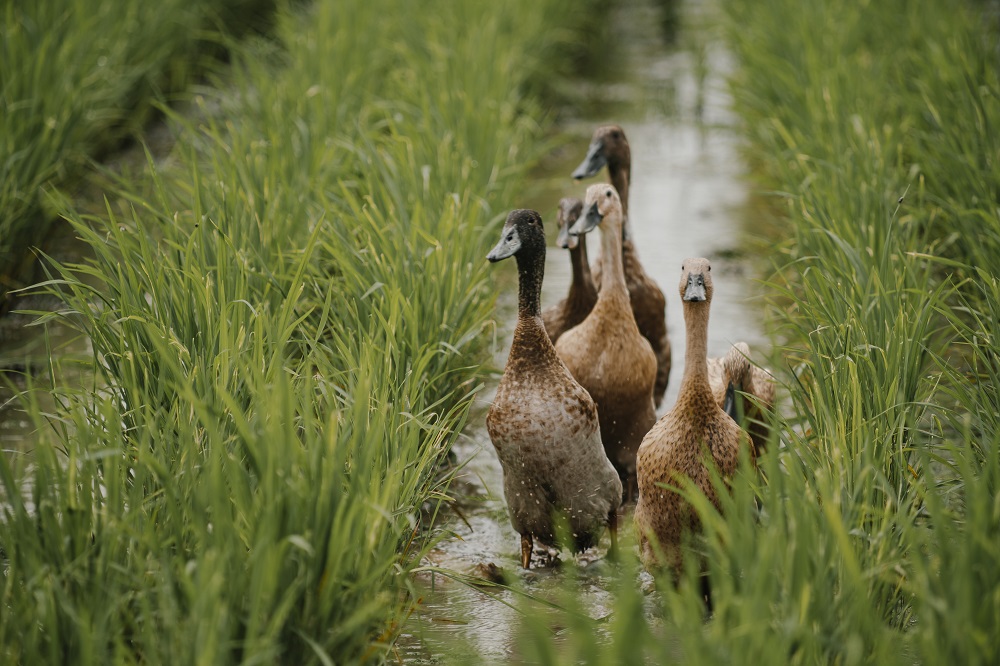
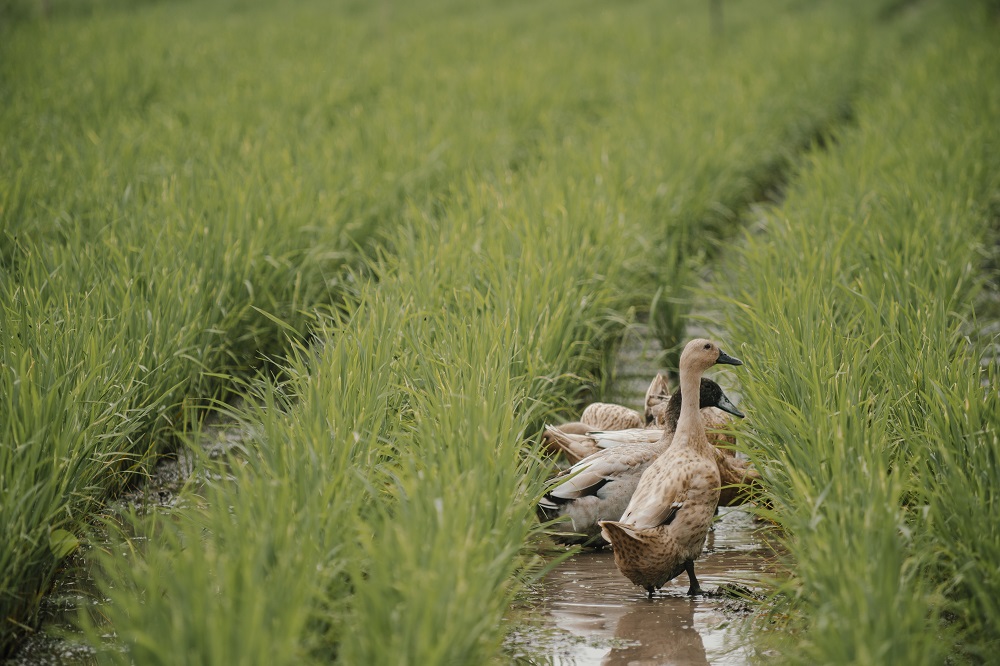
Everything comes together through specialised training, whereby the Astungkara Way team work alongside farmers for a minimum of two rice cycles (the best part of a year). Prepayments are provided for these crucial first cycles to reduce risk for farmers. Finally, Astungkara Way secured a market for rice – in the form of mindful F&B players like Potato Head, Conrad Bali, Bali Beach Glamping and Ulekan.
All of this adds up to more money in the farmers’ pocket – not only are the margins for organic rice higher, but they save on seeds, labour and synthetics each year. Even better has been the ecological impacts. Paddy soils have seen 23 times more microbial life and 60 percent less pests within eight months.
Less than a year into the project and close to 100 farmers have taken the leap to regenerative, with eight hectares of paddy transitioned and more in the pipeline. Ambitious though it may seem, the goal is to scale up this model globally. And in the face of climate change and all of the extreme weather it brings, building resilience and strength in our soils is a must. Astungkara means ‘hopefully’ or ‘god-willing’ in Balinese – let’s hope this trailblazing island initiative helps to carve out a bright future for rice.
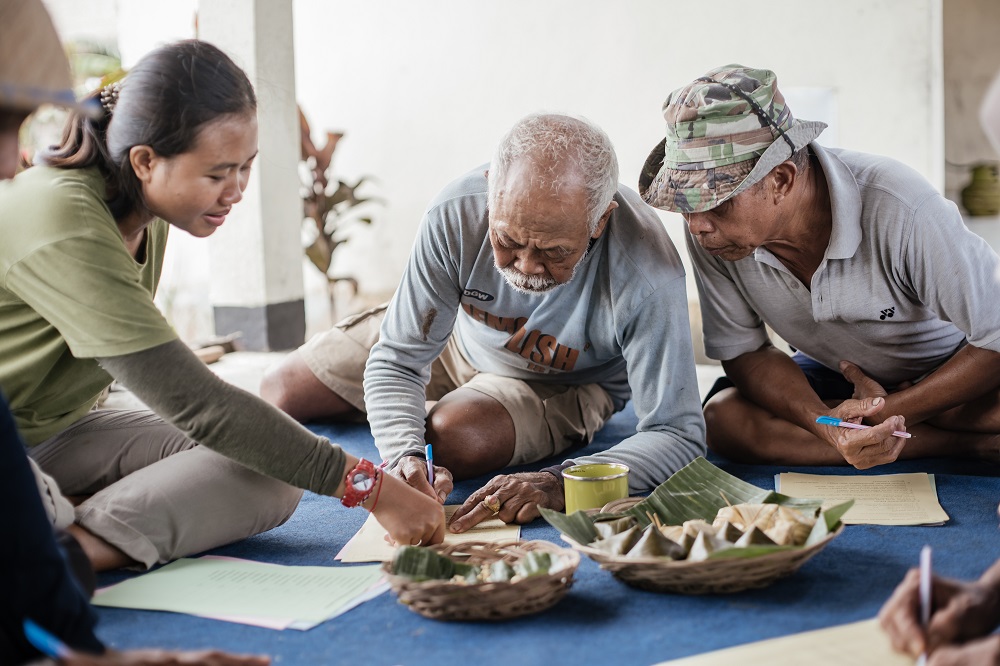
If your F&B business would like to support regenerative rice in Bali, contact Denik on (+62) 895 3972 99080 to find out more and purchase.
Find out more at astungkaraway.com


